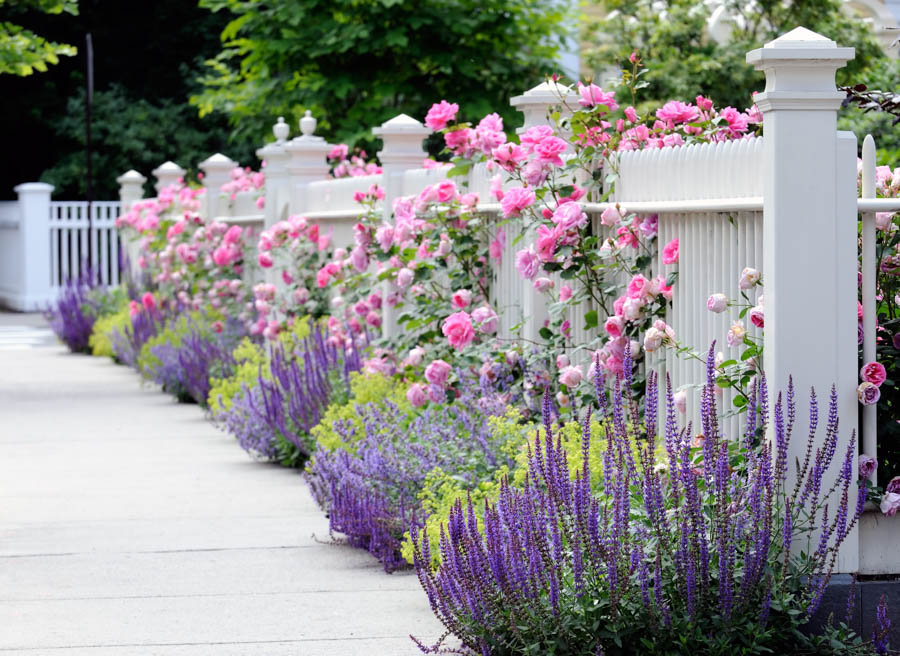Spring Maintenance: Roses, Lavender and Bearded Iris

by Ann Clary and C. Darren Butler
GardenZeus earns commissions on sales made through links in this article. There is no additional cost to you.
Spring is a magical time of year in the Mediterranean garden: the first roses are perfectly colored and formed, lavenders burst forth with mounds of color and bearded iris provide vertical exclamations. Here are our spring maintenance tips for getting the most out of these wonderful plants:
Bearded iris:
- Fertilize bearded iris in early spring when new growth emerges. Select a fertilizer with more phosphorous than nitrogen, designed for flower production, such as Dr. Earth Flower Girl Bud and Bloom Booster. Avoid fertilizers high in nitrogen as this may encourage rot. Follow package instructions, keep fertilizer away from the foliage and the rhizomes and water well. Re-blooming iris are more likely to re-bloom with some additional fertility in their growth cycle.
- In early summer, or about four weeks after they have finished blooming, fertilize bearded iris with the same fertilizer and water well. Do not fertilize again until next spring.
- Once irises are done blooming, remove spent flower stems at base.
Other information on bearded iris see: Bearded Iris: Cultural Requirements
Roses:
- Fertilize actively blooming roses at the end of bloom cycles as they set new buds and grow new leaves with a fertilizer designed to encourage flower production, such as Dr. Earth Flower Girl Bud and Bloom Booster. GardenZeus recommends against fertilizing most roses in most warm to hot summer areas after the beginning of summer to avoid producing growth spurts during summer heat.
- Cut flowers of roses in bloom. Prune expired and dead blooms back to a desirable bud or node for future growth and blooming. Prune crossing and unpromising new growth. Trim off blind shoots, which are short stems that end in leaves and never produce flowers.
- Monitor roses every 2 to 3 days and respond early to pests and diseases.
- Add 1 to 2 inches of mulch to new rose plantings and maintain 2 inches mulch around established plants.
GardenZeus has customized information for growing roses in your zip code. To get started, enter your zip code here.
Lavender:
- Harvest lavender blooms for cut flowers, cooking, and crafts.
- Pinch back and prune lightly to maintain compact growth, clean up dead blossoms, remove crossing growth, and remove stems that have died back. Lavenders bloom on the current season’s growth. Use caution when pruning or pinching back before lavenders have bloomed, especially in spring and late summer or early fall.
- Once established, lavenders require little or no fertilization beyond minimal addition of compost and/or mulch away from the root crown two or three times per year. Maintain 1 inch of coarse mulch beginning a few to several inches from a lavender plant’s main stem, or beginning just inside the drip-lines of larger plants.
GardenZeus has customized information for growing roses in your zip code. To get started, enter your zip code here.
